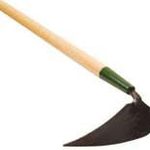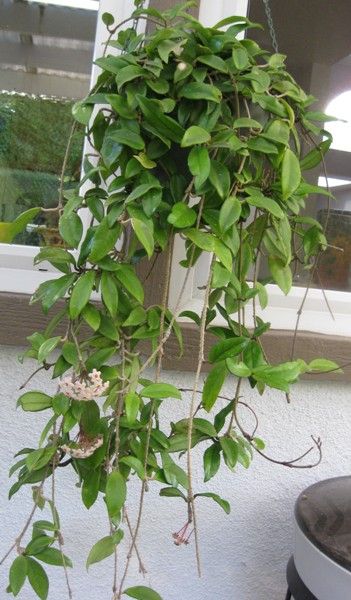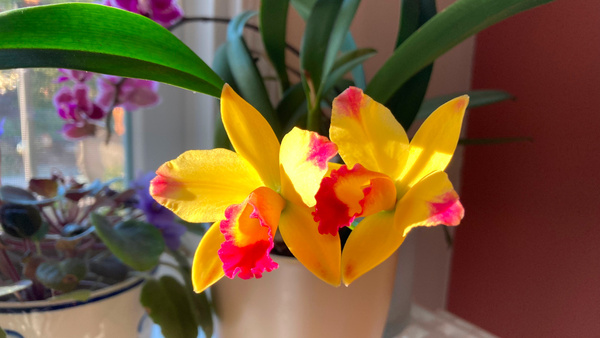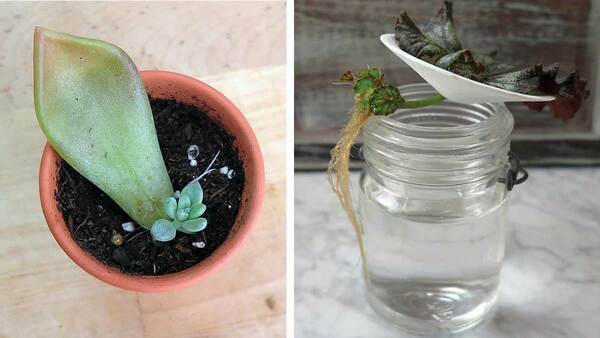
Your grandmother may have called them wax plant or wax flower, but I most often hear them being called by their botanical name, hoya. Hoyas are traditionally grown indoors as a houseplant.
They have thick, fleshy leaves and star shaped flowers that grow in an umbrella shape. These creamy white and pink little flowers are unreal looking. That is to say, they look incredibly fake but your nose will tell you they’re real. They have a sweet fragrance that shows up best in the evening hours.
My hoyas were a gift to me from a friend when her grandmother passed away. While we don’t have their exact birthday recorded, we do know that my friend’s grandmother grew them for about 10 years before she passed on. I’ve had them for 9 years now, so they’re at least 19 years old and still growing strong!
Like most of my indoor plants, my hoyas love a little vacation in a sheltered area outside during the warm months. Because I live in Northern California, they’re outside for half of the year (around April to the end of October). One of the best reasons to let your hoyas hang around outdoors is that the darling little flowers literally ooze sweet nectar in the heat. Most hummingbirds will end up in a 12 step program after discovering them on your back porch.
Growing Hoyas
Although most gardeners recommend regular watering for hoyas, I tend to let mine get on the drier side first. You can get away with placing them in an area that has low light indoors, but if you want to experience the cool flowers, you’ll need bright light to promote bud growth.
If you’re a neglectful gardener, hoyas may be the plant for you. They adore being root-bound and reward you handsomely with blooms in a pot that hugs them tight. Hoyas are handsome plants with vines that can grow anywhere from 10-20 feet long. Enjoy them out-of-doors; just be aware that they can’t take freezing temperatures.
In the summer, hoyas like it warm with bright light for good flower bud formation. In the winter, they like it cool (50-55 F), which is why in our mild climate, I have been able to over winter them outside in a protected area. Not that this doesn’t freak me out – it does. Which is why during an extra cold winter, I can’t stand it and bring them indoors. They also like very little water during this time.
They’re also stupid-easy to propagate. Take some stem cuttings and pop them in water. When you see long roots, pop them into a pot. The cuttings I’ve taken from these plants aren’t true hoya “babies” because cuttings are actually a clone from the mother plant. That is, they are the same age as the mother, albeit smaller.
The advantage to cuttings as opposed to seed from these types of plants is that you’re not waiting a year or two for them to develop their stalks to produce flowers. They’re already mature plants that will have stalks all their own and will bloom the same year you take the cuttings.
The three no-nos with Hoyas:
1. Don’t move these guys once the flower buds appear or they may drop ’em.
2. Don’t over water them – let the top of the soil dry out a bit. Over watering encourages the leaves to fall off.
3. Don’t repot them until you just have to. I didn’t repot mine for seven years (seriously, this was on purpose).
Hoyas are pretty darn hard to kill and are some of the easiest plants I have ever had the pleasure of spending time with.
Fine Gardening Recommended Products

Ho-Mi Digger - Korean Triangle Blade
Fine Gardening receives a commission for items purchased through links on this site, including Amazon Associates and other affiliate advertising programs.

Long Handle EZ-Digger
Fine Gardening receives a commission for items purchased through links on this site, including Amazon Associates and other affiliate advertising programs.



















Comments
Log in or create an account to post a comment.
Sign up Log in